Some of the links in this post may be affiliate links.
Amorphophallus konjac, a species of plant commonly known as voodoo lily, is a bizarre, easy to grow oddity that is sure spark a lot of conversation. From the unusual growth habit, to the inflorescence that smells like rotten meat, this post will teach you all about this unusual plant, as well as how to care for it. And it is easy to care for, whether you plant it in the ground (it is hardier than you’d think) or as a potted plant.
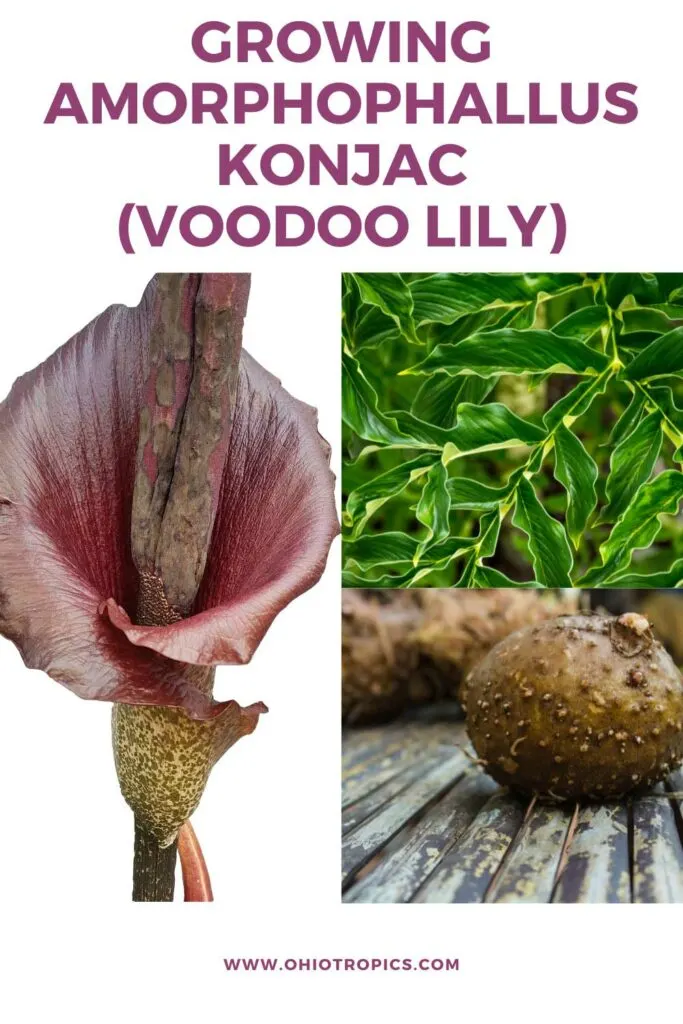
Table of Contents
SOME INTERESTING AMORPHOPHALLUS KONJAC FACTS
Sometimes known as Amorphophallus rivierei, the accepted name for this plant is Amorphophallus konjac.
This tuberous plant is native to China and grows in wet, tropical ecosystems.
It is widely cultivated in both Japan and China for its edible tuber. Although the corm is edible, it can not be eaten raw because of the calcium oxalate crystals that are present which would sting your tongue and throat, and probably why the plant also earns the name Devil’s Tongue.
The calcium oxalate is broken down by either cooking the tuber, or drying it.
The tubers are commonly used to make into flour, jelly, cake, noodles, and more.
Other common names for the plant include Voodoo Lily, Konjaku, Konnyaku Potato, Snake Palm, and Elephant Yam.
Amorphophallus konjac is a similar species to the Corpse Plant (Amorphophallus titanum), except that konjac is much smaller, easier to grow and flower, and produces an inflorescence that is far less stinky.
GROWTH HABIT & LIFE CYCLE
This plant grows from a tuber, and as new leaves grow, the tuber will shrink in size. As the growing seasons continues, a new tuber will start to grow and take the place of the old one.
The stalk is actually the petiole, and has a beautiful mottled pattern. The leaf is actually huge and composed of numerous leaflets.
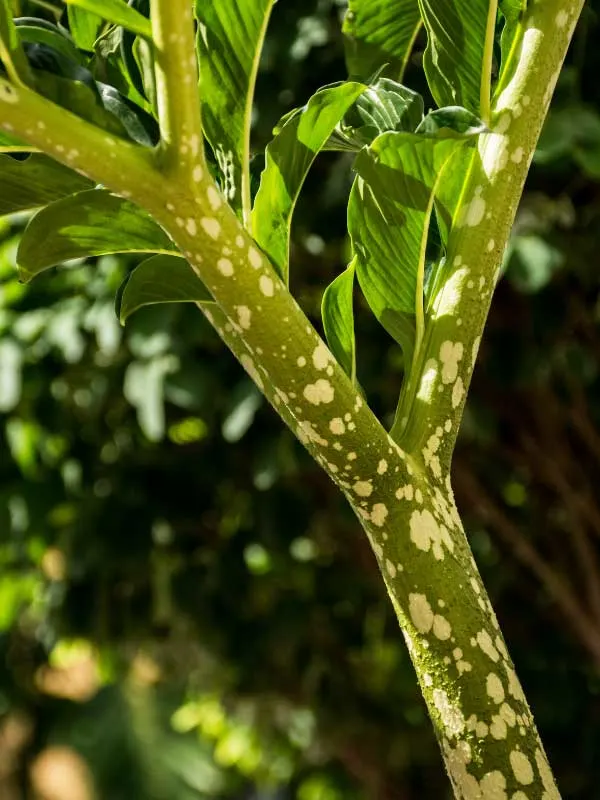
At the end of the growing season, the plant will go dormant (see the Dormancy section near the end of this post), and the plant will lose all of its foliage.
After the dormancy period, if the plant is mature enough, it will flower. The inflorescence smells like a dead animal, and this scent serves to attract its pollinators. After flowering occurs, it will start to grow a new leaf and start the cycle all over again.
These plants are hardy down to about zone 6, and I can attest to this from a friend that has grown this plant in Ohio. It comes back every year. The leaves are not tolerant of frost, but the corm should be hardy down to zone 6 as long as you avoid clay soils which will spell death for this plant in cold-winter regions.
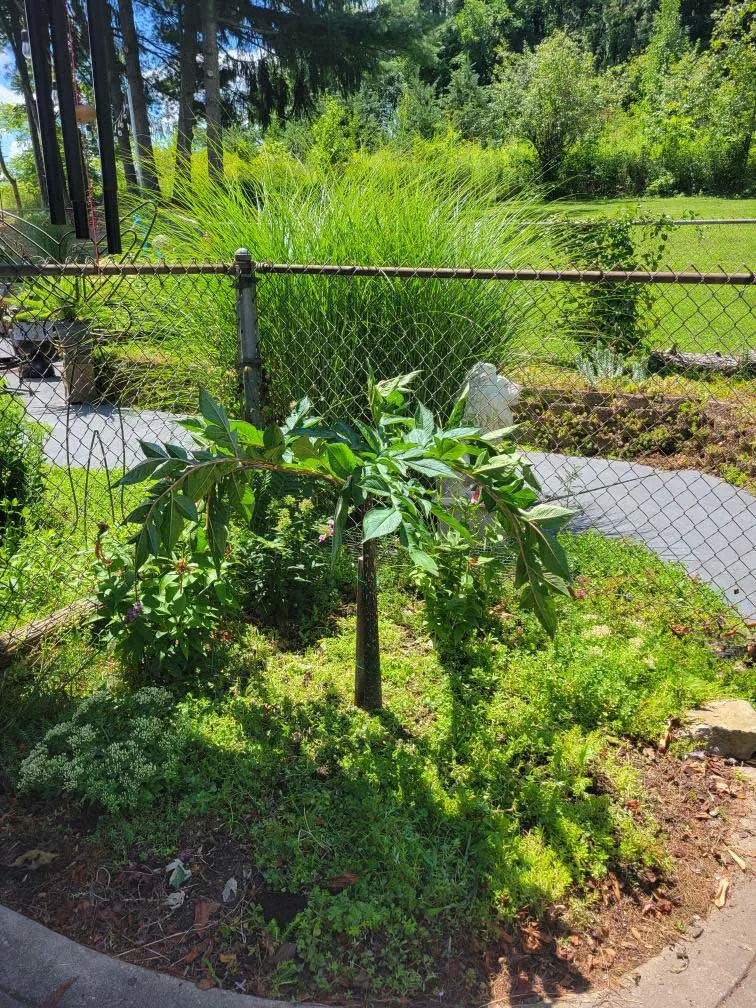
AMORPHOPHALLUS KONJAC CARE
LIGHT
If you are growing this plant indoors, a good location would be either an eastern or western facing window, or even your sunniest window (south exposure if you’re in the northern hemisphere, or north exposure if you’re in the southern hemisphere), especially in the winter time.
If you choose to grow these in the ground (they are hardy down to zone 6 or so), place them in part sun and try and avoid any locations with hot, mid-day sun. A half day of sun should work well, or dappled sun throughout the day.
WATERING
These are definitely moisture loving plants and appreciate being kept consistently moist while in active growth. Mine is in a pot and I water when the surface of the potting mix feels dry to the touch.
It can even tolerate standing in water while actively growing. In the Fall, when the plant starts to go dormant on its own (see the dormancy section later on in this post), you should stop watering.
FERTILIZER
This plant is a heavy feeder, so be sure to feed throughout the growing season, but halt fertilization when dormancy starts and the foliage starts to yellow and die off.
The International Aroid Society recommends a fertilizer that is high in phosphate in order to stimulate healthy tuber growth.
TEMPERATURE
These plants like to stay warm, so try and keep them at a minimum of 60°F (16°C), but prefers warmer temperatures over 70°F (21°C) during the day and at least 66°F (19°C) during the night, with a range of 20-25°C (68-77°F) being an ideal growing range according to the International Aroid Society.
HUMIDITY
This plant does appreciate higher humidity, so aim to keep it at least at 60%, but it should tolerate lower as long as you keep the plant well watered.
POTTING MIX AND SOIL
Amorphophallus loves a potting mix or soil that is well-drained, fertile and moist. If you plant them in the ground, they will not tolerate heavy clay soils, especially if you live in an area where they are marginally hardy because they can rot in cold, wet winters.
In a pot, it’s much easier to control the potting mix. I have mine planted in an all-purpose potting mix to which I’ve added some perlite.
PROPAGATION
Amorphophallus konjac readily produces offsets and new tubers. It is recommended to wait until Spring time to separate any small tubers.
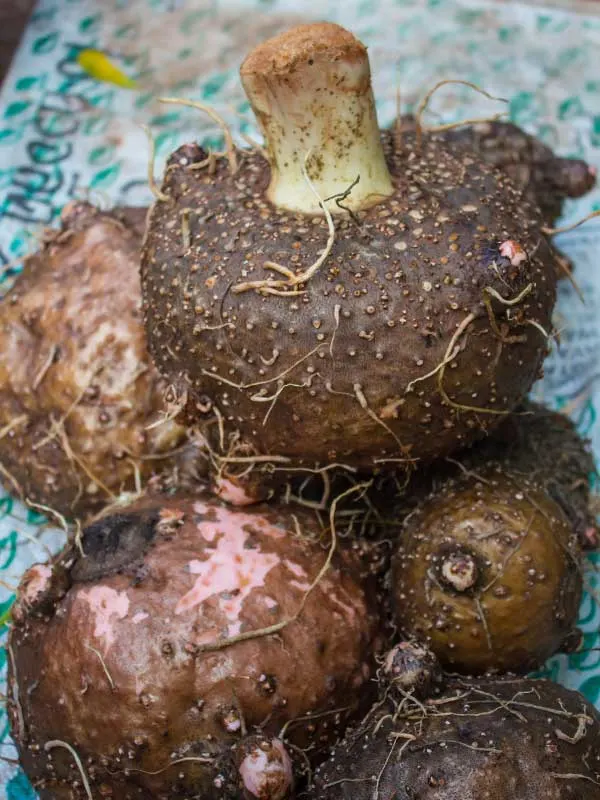
An unusual thing about Amorphophallus is that the roots grow from the top of the tuber, so the top of the tuber must be placed deep enough under the soil surface.
If planting in a pot, choose a pot that is at least twice the diameter of the widest part of the Amorphophallus tuber.
As far as planting depth of the tuber, plant it so that it is at least twice as deep as the tuber is high. So if your tuber is about 2 inches high, plant the tuber so that it’s about 4 inches deep (from the top of the tuber to the top of the soil line).
DORMANCY
Dormancy will start on its own. In fact, for my own plant, within a matter of days, the foliage started to yellow and collapse. Mine started to do this about a month into the Autumn.
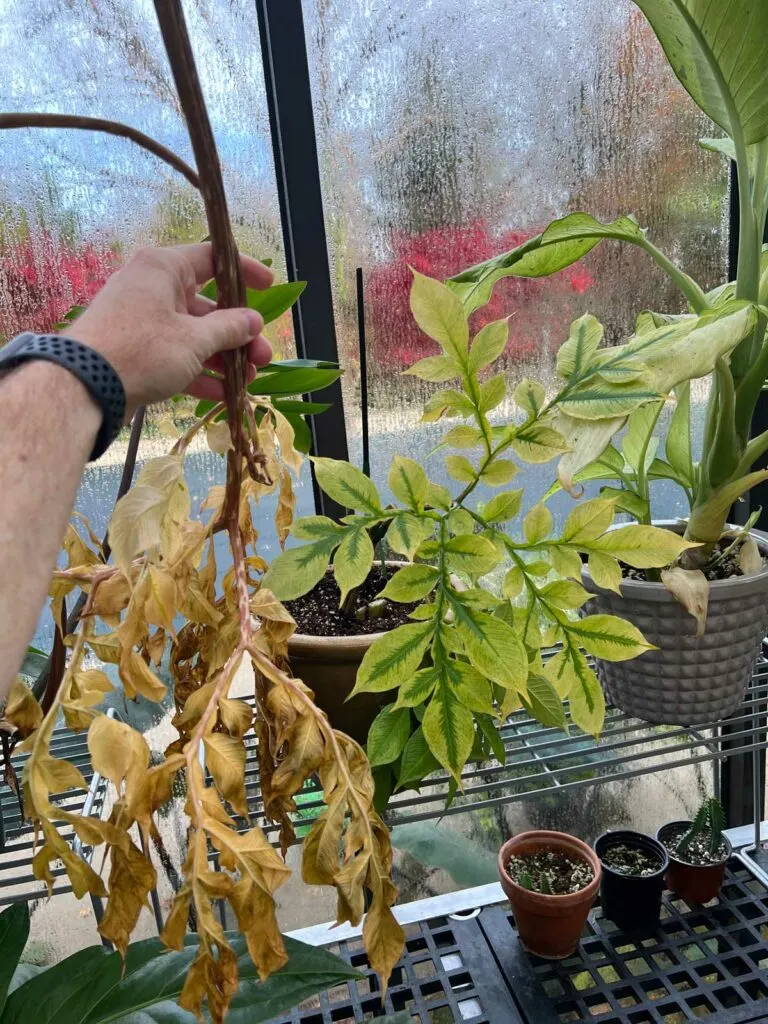
Wait until the leaves are fully browned before removing them. You can see one more leaf in the photo above, and it’s still somewhat green. Leave the foliage until it has turned brown before removing it.
Once your plant starts to go dormant, stop watering your plant completely.
During dormancy, either leave the tuber in its pot, or you can take it out and store it in dry peat moss. If you want to propagate, wait until the Spring time before separating any tubers.
As far as storage during dormancy, store your tubers in a cool, dark location that is around 40-50°F (approximately 5-10°C).
If you’ve kept your tubers in its original pot, wait until you see signs of new growth poking out of the potting mix before starting to water again. At this time, be sure to place your plant back in appropriate lighting.
If you’ve dug the tubers up and stored them in peat moss, inspect the periodically until you start to new new, pinkish growth coming from the top of the tuber. Then plant them as directed in the Propagation section of this post.
FLOWERING
After the dormancy period, if your plant is mature, it will flower. If it still isn’t mature, it will start growing new foliage instead. Typically, your plant will flower when it is 3-4 years old, and the inflorescence is a gorgeous burgundy color.
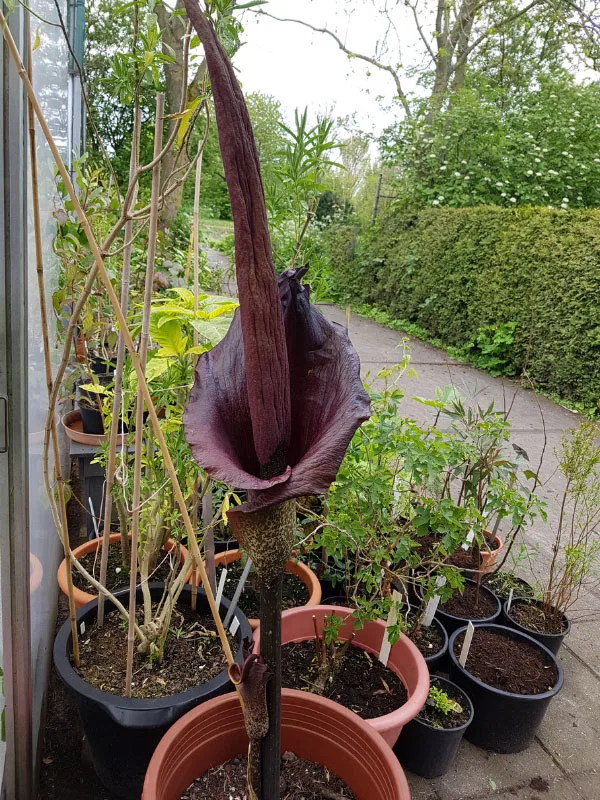
Flowering will typically occur in late Spring to early Summer, and the inflorescence will be 3-4 feet tall.
But beware! The inflorescence smells like rotting flesh, and this is intended to attract carrion flies, its natural pollinators. So be careful where you have the plant when it is bloom!
When the inflorescence is ready to be pollinated, the foul stench starts, and this attracts its pollinators. Once the pollination has occured, the odor disappears.
The inflorescence has the typical aroid structure consisting of a spadix (the spike in the middle that contains numerous, tiny, male and female flowers), and the surrounding spathe (the maroon sheath).
The interesting part is that the plant will actually heat up the spadix once the pollen is ready for fertilization, and this helps to increase the foul odor which is released by the plant in order to attract pollinating insects.
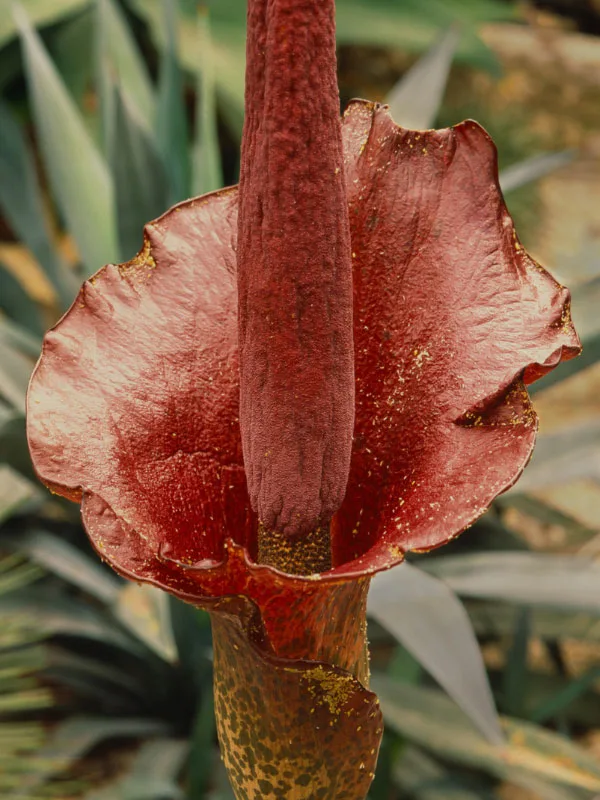
After blooming, the plant will start to throw out foliage growth, which can reach up to 4-5 feet tall under good conditions.
Do you have an Amorphophallus konjac? Comment below. I’d love to hear!

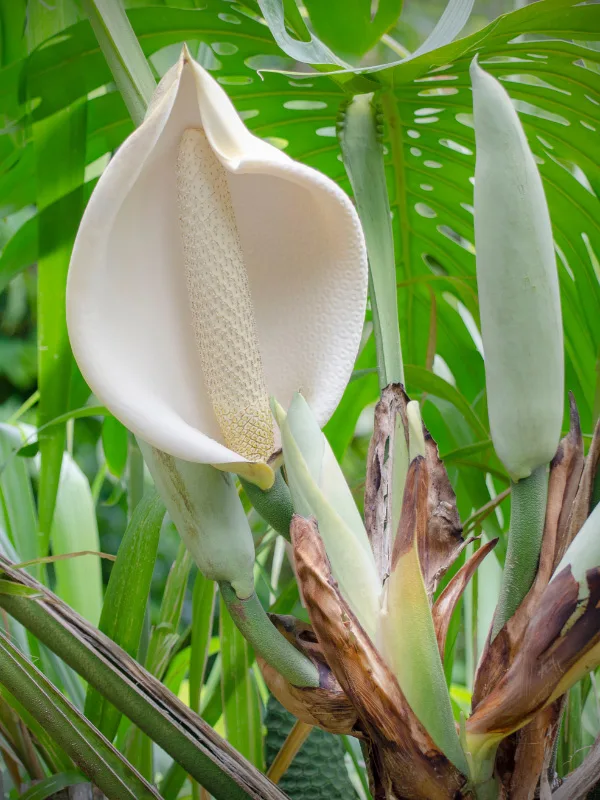
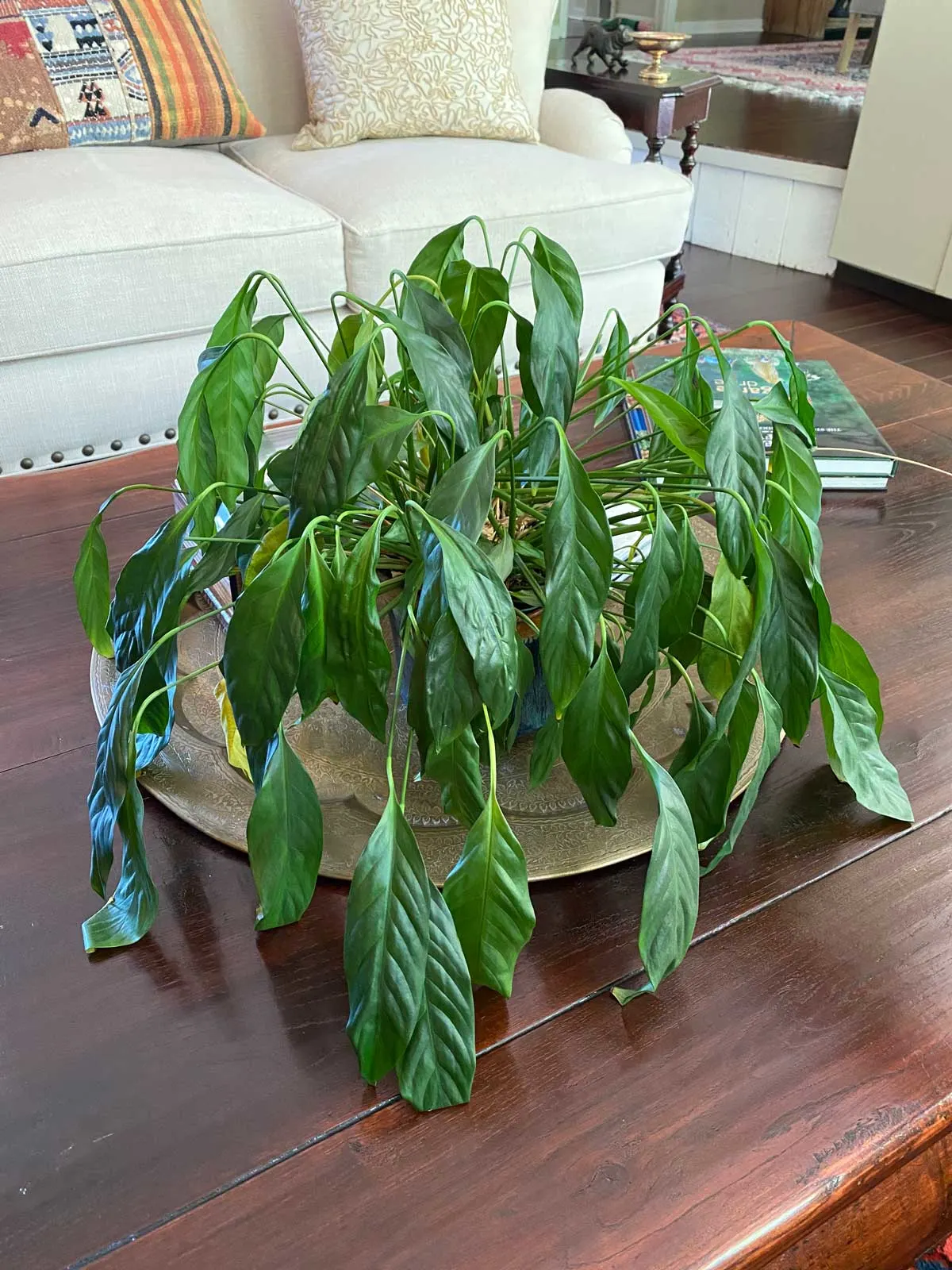
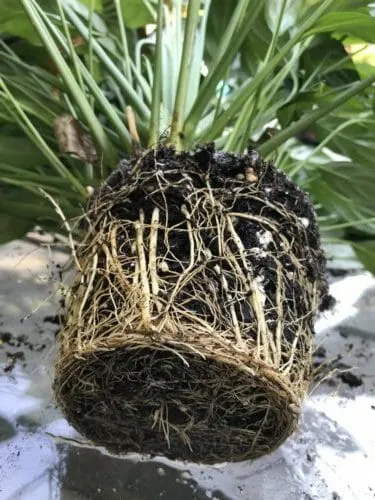
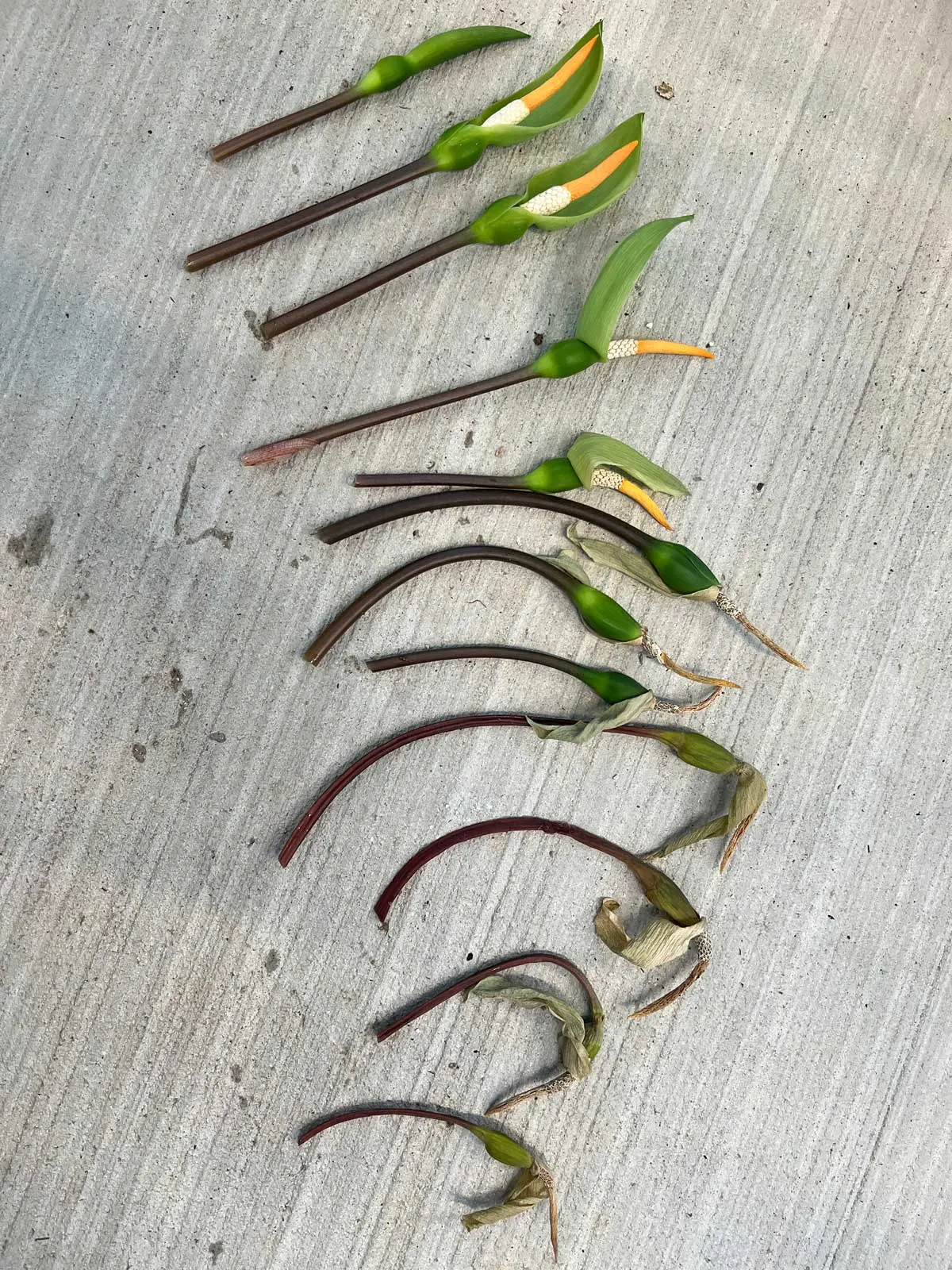
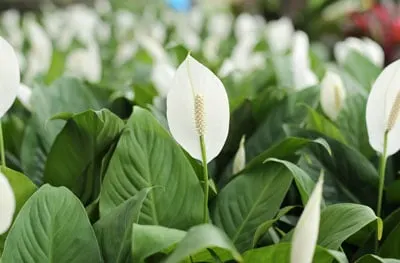
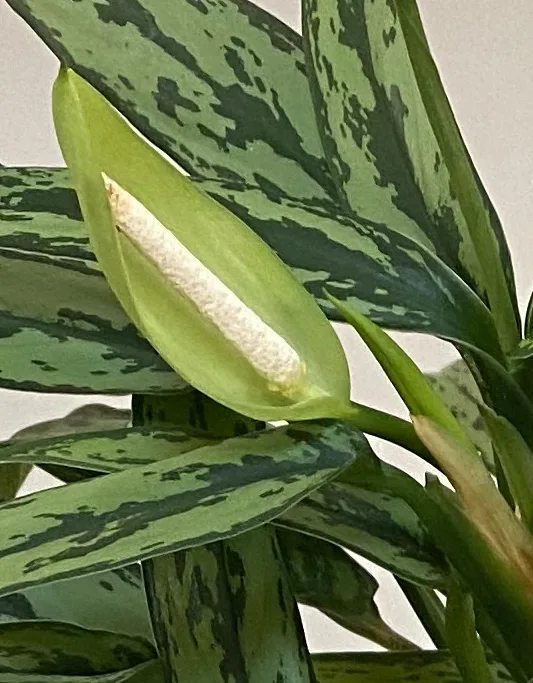
Gerald Brickman
Saturday 6th of July 2024
I want to buy these plants. Now i am in Canada and they can be sent dormant or do you know of a Canadian outlet. I have three different kinds of them and i love them. Gerald Brickman.
Raffaele Di Lallo
Monday 8th of July 2024
Hi Gerald! I'm not certain of who sells them in Canada. I'm sure if you did a search online, you can find it for sale somewhere. Good luck!
Ricardo R. Austrich
Friday 12th of April 2024
Hello! Thanks for this Information, I got the bulb in fall 2022 as a birthday gift. I planted it in a container and Overwintered in a cool basement and put it out during the summer 2023 where it grew beautifully, Dying back in the fall. I am happy to report it is putting out a flowering stock here in Boston in April 2024 inside our south facing plant room. Curious, when i s the best time to repot the plant. I attached a photo if that were possible. Cheers, R.
Raffaele Di Lallo
Saturday 13th of April 2024
Hi Ricardo! I would repot it right when your flower is done. Good luck!
Kai
Tuesday 26th of September 2023
Hi! I got one of these last year and it did well, died back during the autumn, and I kept the tuber in the pot and left it alone while I waited for it to sprout again this year. It's now autumn already and it didn't come out of dormancy. Anything I did wrong or can do to get it to sprout next year? Is it dead...? I haven't watered it and left it by a growlight before moving it to the windowsill in the early summer, but there didn't seem to be any signs of growth.
Raffaele
Thursday 28th of September 2023
Sorry to hear that! It may have either dehydrated, or even rotted. It's hard to say without some more details of your conditions. Did you do anything differently from what I described in my post?
James
Wednesday 16th of August 2023
Hello all, Need some advice. I've got an Amorph. Konjac ...well, I might have if it doesn't die on me. The past two years have been pretty rough on it. I thought I had a very satisfactory soil mix - very well draining with a little mulch and humus mixed in. It has bloomed for me the past several years. It went from practically a volleyball sized corm to a softball sized corm these past two years. I've saved it from rot twice because our weather. It will rain daily for a solid week - which I'm sure is partially to blame for the rot. I have it growing in a pot to make it easier to remove for winter "storage". Last week we encountered a strait line wind and hail. It didn't damage the canopy that much, but it snapped the trunk at soil level. It was still partially attached so I left it alone to see what would happen. Well, the area where it snapped became mushy to the touch (slick as snot). Then I saw that it had severed completely from the corm. So I pulled the corm out of the pot and saw that several spots on it had rot. I've taken a hose and a soft toothbrush and cleaned the areas of rot. Now I'm letting it dry out. The top of the corm has new growth ready for next year. Typically when the cold weather sets in, the foliage starts to die back and the corm starts taking back nutrients from the leaves and trunk as it withers. That's not going to happen this go round. So do I just dust it with some sulfur powder (keep it from any further rot) and store it for next year? Can I keep it from blooming and expending its remaining energy this winter? Is there a better soil mix I could use that will ensure it from rotting no matter how much it rains during the growing season? Any advice would be appreciated!!
Raffaele
Thursday 31st of August 2023
Hi James! Sorry about all the trouble with your plant! I can share your frustration about nonstop rain. I think your comments were spot on. It likely won't bloom at this point, so I wouldn't worry too much about that as far as wasting energy...I think it will probably just grow foliage and not bloom next year, until it gains enough energy again. You may want to store it at this point like you mentioned. However, I would maybe start it back up to grow a little earlier than normal since the corms are much smaller now...As far as potting mix, you may want to add a bunch of pumice. This will increase the drainage and the soil should dry out more (and also introduce more air and help to minimize "overwatering" and rot). I hope this helps a bit!
Kimberly
Friday 21st of July 2023
I'm late to the party but found this post on a google search. I planted some mystery corms and they appear to be konjac. I appreciate your photos and info... I can't wait to see mine grow!
Raffaele
Friday 21st of July 2023
They're definitely fun plants! Good luck Kimberly!